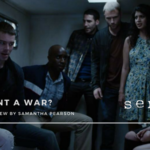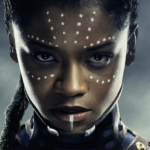
The Best Shots of the 1930’s
The cool kids are back. We’re continuing to hate ourselves and narrowing down the best ten shots of each decade. Since Michael described our objective so well, here’s a little of what you can expect now and from here on out and through the many decades to come!
Recap: We’ve sort of limited ourselves to one shot per movie (Insha: which we may or may not break going forward) (Michael: we will), and we’ve alternated our options. The list is numbered for ease, not because number one is necessarily the best shot. It is pretty great though.
The criteria for our choices is completely subjective, obviously. A shot may be beautiful out of context or only work with the full context of the scene or movie. Obviously the 1930’s was a very formative and experimental decade for film and the varied choices reflect that. We’ll try to explain our selections and why they, and maybe even the movie they’re from, are so damn good.
Recap over: Cool, right? He gives good descriptions for things. For this list, we’re going to be exploring the best shots (to us) of the 1930’s. If you’d like to see our previous list, here’s the Best Shots of the 1920’s for you to start your journey. The 1930’s are full of potential movies which are full of potential shots. (Another sentence stolen from Michael. Cite your heroes kids.) Enjoy ours!
10. Reefer Madness (1936)

There’s so much to take away from Reefer Madness. This was the image that stuck in my head for such a long time. A girl gets so high she jumps out the window and onto the street. It was the time that drugs (pot, let’s be real it was pot) were a considerable problem in peoples minds. They didn’t know exactly HOW the drugs worked, but they knew that it would make people go absolutely mental and do things that they wouldn’t usually do. Reefer Madness is filled with a lot of those moments that I could have picked out. However, it was this moment where you look at the film and go “Are you fucking kidding me?”
09. The Wizard of Oz (1939)
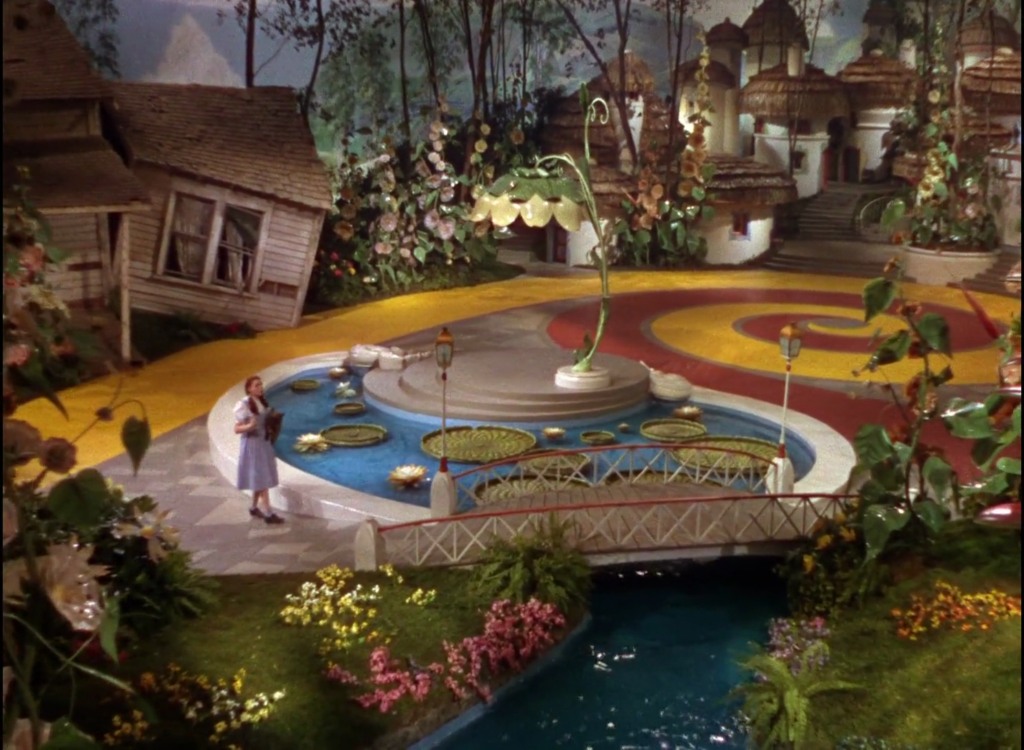
The Wizard of Oz is a big, beautiful film, but this moment stands out. I could have chosen a few different moments — Dorothy (Judy Garland) singing “Somewhere Over the Rainbow,” the Tornado effects, anything in the Wicked Witch’s castle — but the transition from the black and white world of Kansas to the colourful world of Oz is as awe-inspiring as it needs to be. The camera takes its time taking in Munchkinland and allowing us to mentally transition to the fantastical land we’re going to spend the rest of the film in.
08. M (1931)

M is a movie so rich beautifully in beautiful cinematography. It’s hard to pick out that one shot that stands out. Everyone knows that shot where Hans Beckert (Peter Lorre) turns towards himself in the mirror and looks at the M on his back. However, that M is summed up so well by this shot right here. It’s a predator in the shadows preying on a child. Her absolute look of wonder and curiosity at this stranger. The poster in the back warning that there’s a murder about. The M could mean anything molester, murderer, madman, and THIS ONE-SHOT sums up those three M’s so wonderfully that sets the rest of the films ablaze.
07. Stagecoach (1939)

Stagecoach is a lot more than its stunts and shootouts. It’s loaded with interesting characters and themes and has a lot to say about the creation and legacy of the American identity as filtered through the conquest of the West. That being said, those stunts and shootouts are fucking good. This is John Ford’s first western with sound — and his first major collaboration with John Wayne — and he brought out all the stops. I have no idea how he didn’t kill a crapload of stuntmen.
06. Frankenstein (1931) & Bride of Frankenstein (1935)

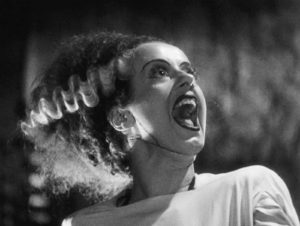
I couldn’t pick between these two movies. Sorry guys, I make my life difficult on purpose. For Frankenstein, the shot of the Monster as his hand twitches and Frankenstein marveling at his invention always gives me the chills. It’s an epic shot of a man realizing his dream. He created fucking life man. For Bride of Frankenstein, Elsa Lancaster isn’t in the movie for very long, but when she is, she makes a presence. After accessing Frankenstein’s Monster, she lets out this HARROWING scream in his face. It reflects a lot. She’s disgusted by him. He’s terrifying to her, even though she’s a “monster” now as well. Elsa’s scream and face sum everything up in that one shot, and it sells the entire thing.
05. King Kong (1933)
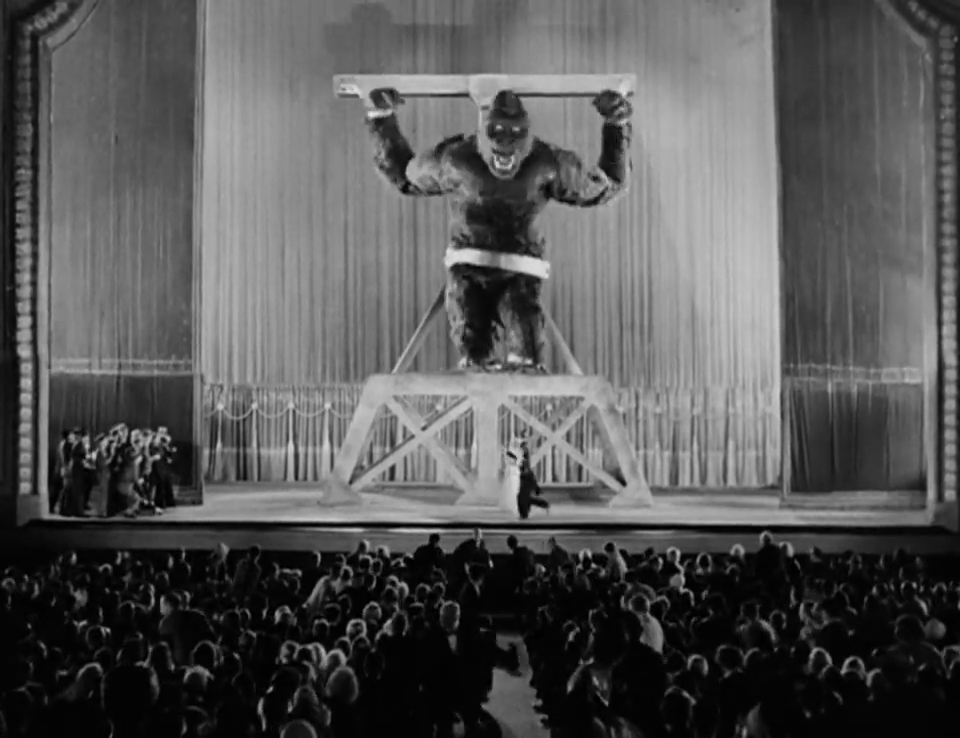
A more obvious choice for best shot in King Kong would be something from the finale on the Empire State Building. While the camerawork there is great and it’s a solid effects showcase, I think this shot is more indicative of the power of the film. Kong is a sympathetic and tragic figure. Him being chained up and displayed to a bunch of rich assholes is a perfect way to get us at least partially on his side when he finally breaks free and goes through his New York rampage.
04. The Invisible Man (1933)

The Invisible Man doesn’t get enough recognition as a Universal Monster, but dammit, it should. Invisible Man should not work on screen, especially in the 1930’s but practical effects are highly underrated. Here’s where we those practical effects take place. The Invisible Man is invisible. As an audience, we’re dying to see what’s underneath the bandages. This shot is such a shocking moment to say. You get the side view of what should be a face, but only half of one. It’s a shot that made my eyes widen at first view and made me wonder HOW they did this. It’s also a shot that lets you know that this is ALL over his body. This isn’t just in a small spot.
03. Mr. Smith Goes to Washington (1939)
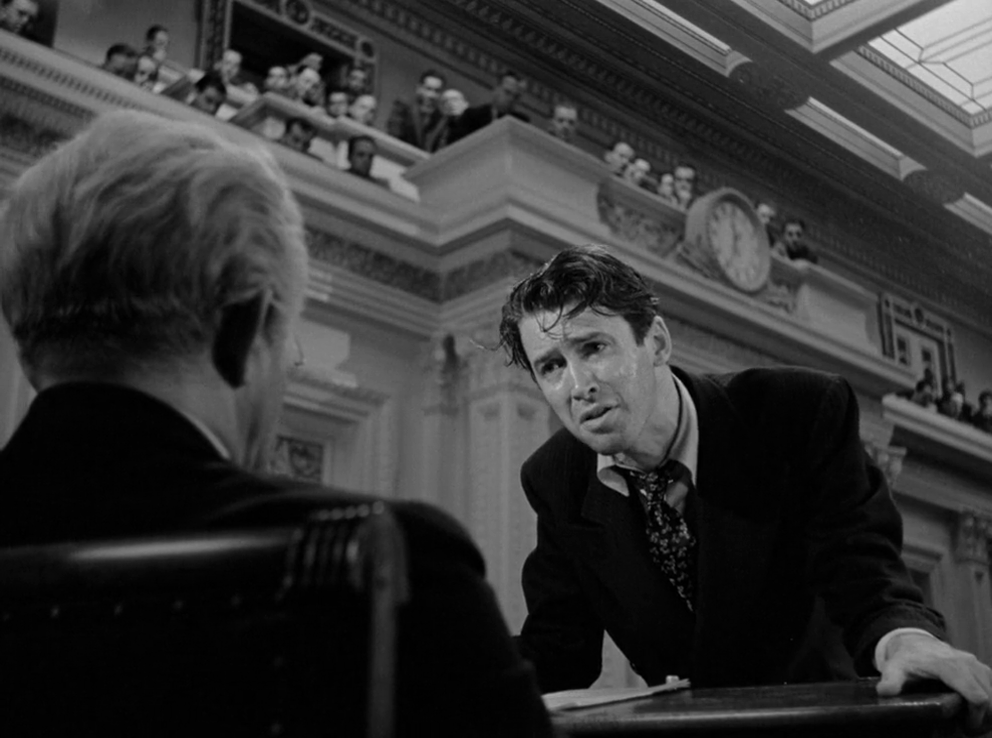
While Mr. Smith Goes to Washington doesn’t hit the heights of It’s a Wonderful Life — few movies do — it’s still a wonderful collaboration between Jimmy Stewart and Frank Capra. The corny idealism that one man can change the whole system feels a little simplistic these days, but the depiction of a corrupt Senate and an uphill battle to do anything right in politics is timeless. This shot of Jefferson Smith (Stewart) confronting Senator Paine (Claude Rains) particularly stands out. Smith has the moral and visual high ground, but he’s worn down and dishevelled while Paine stands still and unmoving, a perfect metaphor for political progress.
02. Freaks (1932)

Banned for some reasons including the fact that people can’t stand anything that is different from them (fucking cowards), Freaks stands the testament of time proving that it’s still a hell of a film. This shot, with Johnny Eck walking towards the camera, is one of the things that sticks with you the most. He’s the most adorable thing on the planet. He walks in with a likable charm, a warm greeting, and smile that makes YOU beam. You don’t see that he doesn’t have legs at first. You just see Johnny.
01. Duck Soup (1933)

The Marx Brothers weren’t afraid to use the conventions of cinema to sell their gags. Duck Soup alone uses big musical productions and editing and costuming gags along with their classic vaudeville routines. But some of the best moments are when the camera stands still, and they let them do their thing. Few things are as iconic as the mirror routine, where Harpo disguises himself as Groucho and tries to mimic his moves exactly (and, occasionally, inexactly). It’s a well-rehearsed masterclass in comedy, and you could argue it isn’t even the best gag in the movie.
We’ll be back next time with more wizards, wonderful lives, and an entire movie…

